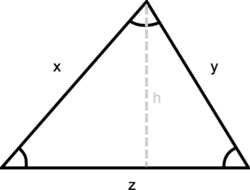Free ASVAB Practice Tests
-
Every Test is UniqueCustom software and unique templates randomize questions, answers, and variables every time you take a new test. You'll never take the same test twice!
-
1,557 Questions, Problems & Flash CardsHuge database of 668 multiple-choice questions, 135 math and algebra problems, and 754 flash cards to help you prepare for the ASVAB.
-
Detailed SolutionsGet a question wrong? All questions and problems have detailed answer explanations so you can learn exactly how to get it right the next time.
-
Know You're ReadyWant to know how you stack up? When you're done with a practice test you can compare your score to everyone else who has ever answered those questions.
-
Interactive Study GuideDetailed ASVAB study guide, MOS study guides, and line score study guides outline exactly what you should know to earn your target scores and customized tests and flash cards for each topic let you laser focus your limited study time.
-
Brand New for 2019ASVAB Test Bank has been completely redesigned for 2019 with all new questions, problems, and flash cards. And the redesign isn't done! Coming soon:
- More Content
- More questions, problems and flash cards
- Bookmarks
- Create a custom study guide with just the topics you're studying
- Score Estimator
- Custom estimate of your potential ASVAB score
Plus printable tests, Q&A, and an ad-free upgrade. Have a suggestion? Please let us know what you want!
Take an ASVAB Practice Test
Sample Practice Test Questions
Ezra loaned Monica $1,100 at an annual interest rate of 7%. If no payments are made, what is the total amount owed at the end of the first year?
The yearly interest charged on this loan is the annual interest rate multiplied by the amount borrowed:
interest = annual interest rate x loan amount
i = (\( \frac{6}{100} \)) x $1,100
i = 0.07 x $1,100
No payments were made so the total amount due is the original amount + the accumulated interest:
total = $1,100 + $77total = $1,177

If side x = 12cm, side y = 9cm, and side z = 9cm what is the perimeter of this triangle?
The perimeter of a triangle is the sum of the lengths of its sides:
p = x + y + z
p = 12cm + 9cm + 9cm = 30cm
Friction resists movement in a direction __________ to the movement.
opposite
Friction resists movement. Kinetic (also called sliding or dynamic) friction resists movement in a direction opposite to the movement. Because it opposes movement, kinetic friction will eventually bring an object to a stop. An example is a rock that's sliding across ice.
In taxonomy, domains are the broadest classification of life. How many domains are there?
3
The broadest classification of life splits all organisms into three groups called domains. The three domains of life are bacteria, archaea and eukaryota.
The two heart chambers that pump blood called:
ventricles
The heart is the organ that drives the circulatory system. In humans, it consists of four chambers with two that collect blood called atria and two that pump blood called ventricles. The heart's valves prevent blood pumped out of the ventricles from flowing back into the heart.
Opposed cylinder designs feature two rows of cylinders that are placed at what angle to each other?
180°
Opposed cylinder designs place cylinders flat in two rows 180° opposite each other with a single crankshaft running between them.
The crust and lithosphere of the Earth is made up of which of the following?
plates
The crust and the rigid lithosphere (upper mantle) is made up approximately thirty separate plates. These plates more very slowly on the slightly more liquid mantle (asthenosphere) beneath them. This movement has resulted in continental drift which is the gradual movement of land masses across Earth's surface. Continental drift is a very slow process, occurring over hundreds of millions of years.
The electrical potential difference between two points is called:
voltage
Voltage (V) is the electrical potential difference between two points. Electrons will flow as current from areas of high potential (concentration of electrons) to areas of low potential. Voltage and current are directly proportional in that the higher the voltage applied to a conductor the higher the current that will result.
Which of the following is the preferred method for splicing wires?
soldering
Splicing is permanently joining two wires together. Splicing can be done with screw-on connectors or wire crimps but the preferred method for splicing is soldering. Soldering takes the most effort but results in a connection that is electrically and mechanically identical to the original wire.